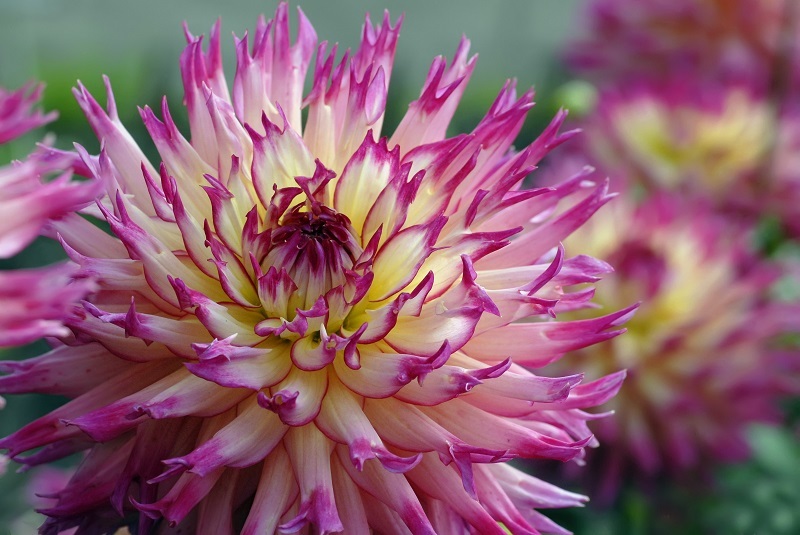Discover the Keys to Poinsettia Longevity
Posted on 22/08/2025
Discover the Keys to Poinsettia Longevity: Keep Your Holiday Star Thriving Year-Round
The vibrant poinsettia plant has become synonymous with the holiday season, adorning homes with its brilliant red, pink, or white bracts. While many enjoy its festive display in December, most are left wondering: Can poinsettias live beyond the holidays? With the right care strategies, your poinsettia can not only survive but also flourish, rewarding you with healthy foliage and beautiful color for years.

Poinsettia Longevity: Myth vs. Reality
Many believe poinsettias are temporary decorations, doomed to wilt once the holidays pass. This is a myth! Understanding poinsettia lifespan reveals that, with proper maintenance, these plants can last for years, and even rebloom the next winter. Let's debunk the myths and empower you to unlock the secrets to long-lasting poinsettias.
How Long Do Poinsettias Last?
- With minimal care: 4-6 weeks indoors
- With attentive care: Several months after purchase
- With year-round commitment: Multiple years with potential for reblooming
The keys to extending poinsettia life lie in proper light, water, temperature, and seasonal techniques. Let's dive into the steps for keeping your vibrant specimen thriving long after the last gift is unwrapped.
Poinsettia Care: The Foundation for Longevity
1. Perfecting Placement: Light and Temperature
Light is one of the most important factors for poinsettia longevity. These plants thrive with at least 6 hours of bright, indirect sunlight daily. Avoid direct afternoon sun, especially through glass, as it can scorch the bracts and leaves.
- Daytime temperatures: 65-72?F (18-22?C).
- Nighttime temperatures: Not below 60?F (16?C).
- Avoid cold drafts and heat sources (fireplaces, radiators, heat vents).
Tip: If you notice the leaves yellowing and dropping, your plant may be in a drafty spot or exposed to sudden temperature changes.
2. The Art of Watering
Overwatering is the biggest threat to poinsettia longevity. Your plant prefers slightly moist--never soggy--soil. Let the top inch of soil dry out before watering again.
- Water thoroughly so excess drains through the pot's holes; never allow the plant to sit in drainage water.
- Humidity helps! Poinsettias love environments with 50-60% humidity. If your home is dry, use a humidity tray or room humidifier.
Signs of trouble: Wilting, yellowing, or leaves falling can mean underwatering or root rot from soggy soil.
3. Feeding for Vitality
To maximize the success of your poinsettia all year, begin fertilizing about 6 weeks after it stops flowering. Use a balanced houseplant fertilizer (20-20-20) once a month during spring and summer. Stop fertilizing in autumn as the plant prepares to rebloom.
Seasonal Poinsettia Care Schedule
Winter (Holiday Display)
- Choose a healthy plant with deep green leaves and no yellow spots.
- Remove the decorative sleeve after bringing it home to allow for air circulation.
- Place in a bright spot away from drafts; monitor soil moisture closely.
Spring
- When colorful bracts start fading, cut back stems to 6 inches.
- Repot if roots are crowded, using fresh, well-draining potting mix.
- Begin monthly feeding with diluted fertilizer.
Summer
- Consider moving your plant outdoors once temperatures remain above 60?F at night.
- Choose a shady location; gradually introduce it to filtered sunlight to prevent shock.
- Pinch back growing shoots to encourage bushier growth and more blooms.
Fall & Reblooming Poinsettias
- Stop fertilizing by late September.
- Move indoors before first frost.
- Key to reblooming: Provide 14-16 hours of complete uninterrupted darkness nightly, starting in late September through November. Any exposure to light delays blooming.
- During the day, place in bright, indirect sunlight as before.
Pro Tip: Use a cardboard box or cover closet to guarantee total darkness. Even a sliver of light can disrupt your poinsettia's internal clock!
Troubleshooting Common Poinsettia Problems
Drooping Leaves or Leaf Loss?
- Often a sign of overwatering or extreme temperatures.
- Check for root rot (smell the soil, look for blackened roots). Allow to dry out if soggy.
- Wilting with dry soil? Water generously until it drains from the pot's base.
Yellowing Leaves
- Usually caused by lack of light or overwatering.
- Move to a brighter area and adjust watering habits.
Leaf Curl or Brown Edges
- Low humidity is a typical culprit.
- Mist lightly, group plants together, or set a tray with pebbles and water below the pot.
Expert Tips for Extending the Life of Your Poinsettia
- Buy Healthy: Pick a lush, full poinsettia with tightly clustered, colorful bracts and abundant, healthy foliage.
- Protect from Cold: When bringing home, wrap your plant to shield it from chilly air.
- Rotate Regularly: Turn the pot a quarter turn weekly for even growth and color.
- Repot Annually: Each spring, use a well-drained, peat-based soil to give roots room to expand.
- Prevent Pests: Watch for whiteflies, mealybugs, or spider mites. Wash affected leaves with mild soap and water or use insecticidal soap.
- Pinch for Bushiness: In late spring and early summer, pinch off the tips to encourage a fuller plant.
Emphasizing the Importance of Patience
- Poinsettias are naturally slow growers outside their blooming cycle.
- Consistent care will reward you with a vibrant, long-lived houseplant.
Poinsettia Longevity FAQs
Can you keep poinsettias every year?
Absolutely! Many enthusiasts keep the same poinsettia for several seasons, with proper care and timely pruning.
Is reblooming difficult?
Reblooming does require dedication, especially to provide total darkness at night for 8-10 weeks. Follow the steps above and your plant will reward your patience!
Are poinsettias poisonous?
Contrary to popular myth, poinsettias are not deadly poisonous. However, their sap can irritate skin or be mildly toxic if ingested by pets or children--keep the plant out of reach to be safe.
Can poinsettias go outside?
Once nighttime temperatures reliably stay above 60?F (16?C), established poinsettias can acclimate to gentle outdoor conditions. Gradually transition them to avoid sunburn and move indoors before fall frost.

Summary: The Keys to Keeping Poinsettias Thriving
- Provide bright, indirect sunlight and steady, warm temperatures.
- Water only when the topsoil dries, keep roots from standing in water.
- Feed monthly in active growth, but stop in late summer.
- Prune after flowering, repot annually, and pinch branches for bushiness.
- For holiday color year after year, give complete darkness every night for at least 8 weeks each fall.
Discovering the keys to poinsettia longevity isn't difficult. With the right environment and attention, your poinsettia plant can brighten your space for many holiday seasons to come. Embrace these expert care strategies and enjoy the festive charm and lush greenery of long-lasting poinsettias all year round.
Ready to Make Your Poinsettia Last for Years?
By following this comprehensive guide on poinsettia longevity, you'll not only impress your guests but also create an enduring holiday tradition. For more plant care tips and expert advice on ornamental houseplants, bookmark this guide or share it with fellow gardeners!
Latest Posts
Expert Advice on Nurturing Your Cut Floral Arrangements
What Does Your Birth Flower Whisper About You
Discover the Keys to Poinsettia Longevity
A Journey Through Peony Flowers: Their Symbolism and Colours







